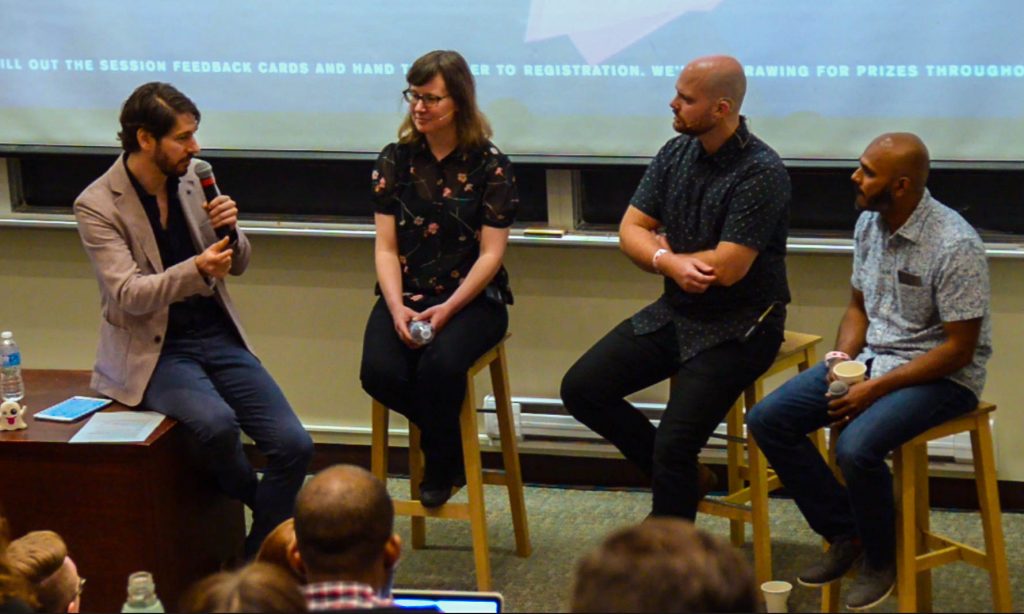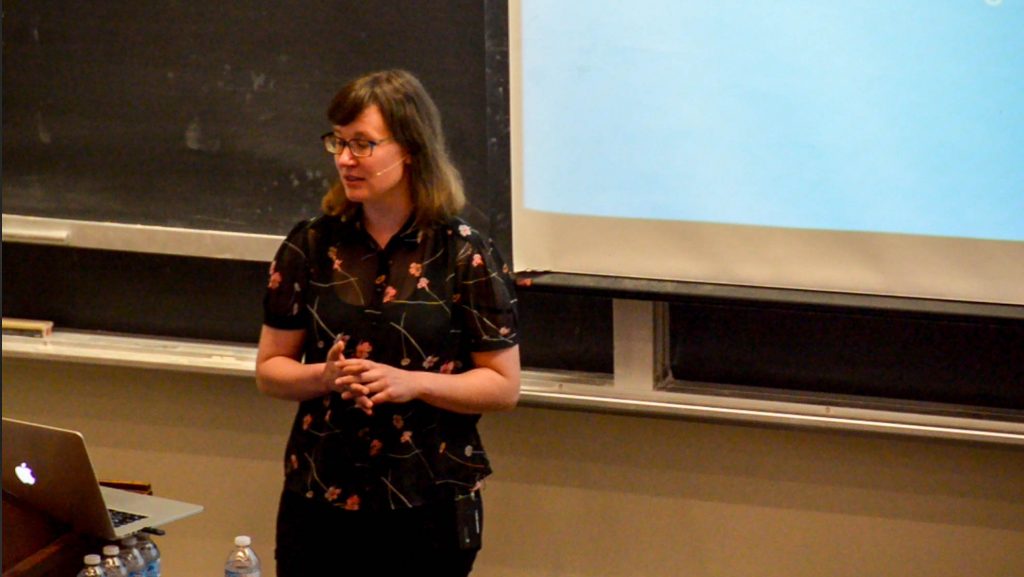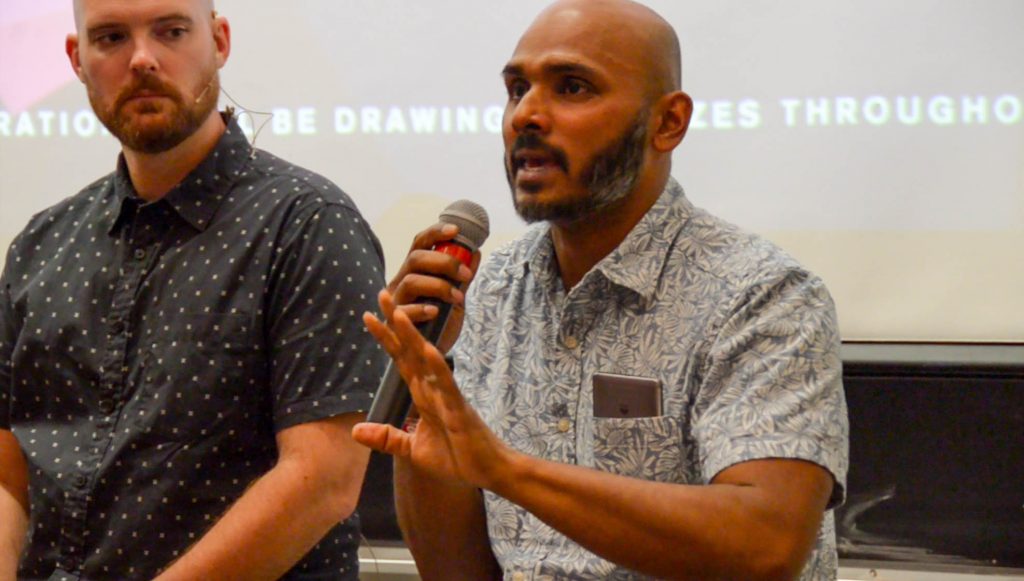Transcript
Lesley Predy:
User experience design is a great kind of meshing of some aspects of science, experimentation. Some art and then you know design principles. As a designer, it’s hard. Like, you’re often trying to kind of rely on your own experiential knowledge, but that’s where the science part of it comes in. You know science is all about kind of narrowing down on a hypothesis. That’s what my talk is about. So I find that the science aspect helps me with user testing and testing concepts.
Matt Hyrhorsky:
When we’re doing our design solutions there are artistic aspirations that we take and that we draw from to create things that are going to really resonate with people. When you think about art, it could be verbal art, it could visual art, it could be you know music. There’s a number of different facets of art that we pull into our projects.
Lesley Predy:
When I first started out I thought that UX was all about the UI, so I was very interested in designing the interface, but as I grew in my grew in my career I realized that it’s more about this holistic journey. So, there’s business, there’s business kind of things that you need to pay attention to. Is your product going to be able to sell? How does the customer find out about your product or service? How do they purchase it? All of those can be just as important as the product itself, and I’ve become more aware of that.
Zuzana Sekerova:
I think there is a lot of creativity needed where you’re trying to think of how to design interactions between people or interactions between people and the digital experiences. So I don’t think it’s all about the technical. I think it’s also understanding human behavior, but then also collecting the creativity in coming up with interesting experiences.
Matt Hyrhorsky:
I think that as long as an organization is thinking about people and really putting effort into understanding and why they are doing what they are doing, and who their really customers are and what they really want then you can use whatever framework you think is the most appropriate for solving that problem. And, it’s less about the framework and it’s work but the fundamental shift-around. You know, we don’t know the best. Our customers know the best. What they say they want or they need, it’s our responsibility to interpret that and really create a solution that is going to be great for them. Because at the end of the day they are the ones who are buying our products and using our services. So us imposing something on them is an unfair way for us to do business.
Dayton Pereira:
The design to ship is really a sort of a mentality around using the processes of agile and lean UX to reduce the amount of wastes and artifacts that otherwise don’t really get used. Being able to do whatever it takes as a designer, within the confines of what you know how to do, to move the product forward. So, if that means you go from designing something in a design tool, to prototyping it in HDML, to interacting with developers and their dev teams, learning some CSS, getting your hands dirty, into user interviews and data analytics. It’s all within the wheel-house of shipping a product that I feel more designers should need to feel responsibility for.
Lesley Predy:
At Auto Guest we’re really big on doing things with machine learning in AI. In my work in particular, we’re trying to use machine learning to automate kind of these mundane tasks. So, setting up a 3D print or using machine learning to kind of suggest better manufacturing processes. It’s more about, right now, augmenting human activity; so suggesting better methods, so robots haven’t taken over yet and machines haven’t taken over quite yet, but I think it’s going to start playing more of a role.
Matt Hyrhorsky:
I feel like a designer that doesn’t experiment or play is not doing their job. You know it is our job is to try things that are new. It is our job to think pie in the sky. It’s our job to you know, ask a series of what if questions. You know, what if we had like a kabillion dollars? Not a number, but if we had that much money we could do anything we wanted. What would we do? I find a lot of times there is a limitation on that. People don’t do that, and it’s important to ask those questions.
Dayton Pereira:
The stuff that we do is complex. It involves human beings, and you can’t always control what people say or do, and so the only thing we can do is do the best we can do and then make sure that we’re always learning, understanding, reiterating and making improvements on a continuous basis.
On May 10th, 2018, FITC’s Spotlight UX/UI event returned to Toronto to educate and equip designers with the latest tips and techniques for projects that are transforming our world today.
The event featured talks and panel discussions from top North American designers and developers in the field of user experience and interaction design.
Say Yeah was thrilled to capture talks and interviews
at FITC’s Spotlight UX/UI event.
Here are our major takeaways from each of the speakers:
Starting the day off, Zuzana Sekerova, from Atlassian, spoke about qualitative data as a key element that can improve product experience, and how this translates to Atlassian’s efforts.
She used the example of Atlassian’s free startup trials. It was found that users often signed up to multiple trials to get a feel for the product and then would finally commit quickly on a last new trial after they had finally made the decision to proceed. The consensus from looking at the trial user data was that some customers were quick to commit, while others never did. It wasn’t until taking a deeper dive with new customers that it was understood they had used multiple ways to earn numerous free trials until they were comfortable enough to commit, which completely changed the team’s perspective on how to operate and measure trials.
“It’s not all about the technical; it’s about understanding human behaviour to come up with interesting experiences.” ~Zuzana Sekerova
UX/UI panel discussion

At the UX/UI panel discussion, articulating what it means to be a designer was at the forefront of the conversation.
Moderated by our very own CEO, Lee Dale, the panel shared professional experiences, including those successful and poor decisions that led them to their current place in the industry. Matt Hryhorsky shared a great point on how the role of design is more methodological than artistic, suggesting that the industry should shift from referring to designers as rock star solutionists, and instead call them methodology experts.
“Our job is to primarily listen and synthesize before problem solving.” ~Matt Hryhorsky
Leslie Predy of Autodesk shared first-hand insight on machine learning practices and how her team looks to augment human activity to improve efficiency and capability. Working with companies in manufacturing, she and her team have learned the importance of constant iteration and validation while creating digital products in order to apply learning from industry subject matter experts and users.

“Test early, because the more mature your product is, the harder it is to change.” ~Leslie Predy
Dayton Pereira taught attendees about “designing to ship,” a staple within his practice.
To Dayton, designing to ship is a mentality around using agile and lean UX processes to reduce the waste that often happens between design and development teams.
For a designer, this means doing whatever it takes to move the product further along the production line—from inception, to prototyping, to development—in order to see the design through to the finished product. This means working more collaboratively with developers, having a hand in front end code, and ultimately taking responsibility for what users see and interact with.

“More designers need to feel responsible for shipping a product.” ~Dayton Pereira
Spotlight UX/UI has proven how great design and technology can work together to create valuable products and experiences. If you’re a designer, innovator, developer, or a student studying in these fields, we encourage you to attend Spotlight UX/UI next year!
Experience design as a foundational skill
If you’re looking to bring fundamental experience design methodologies and execution to your team, we’re here to help.